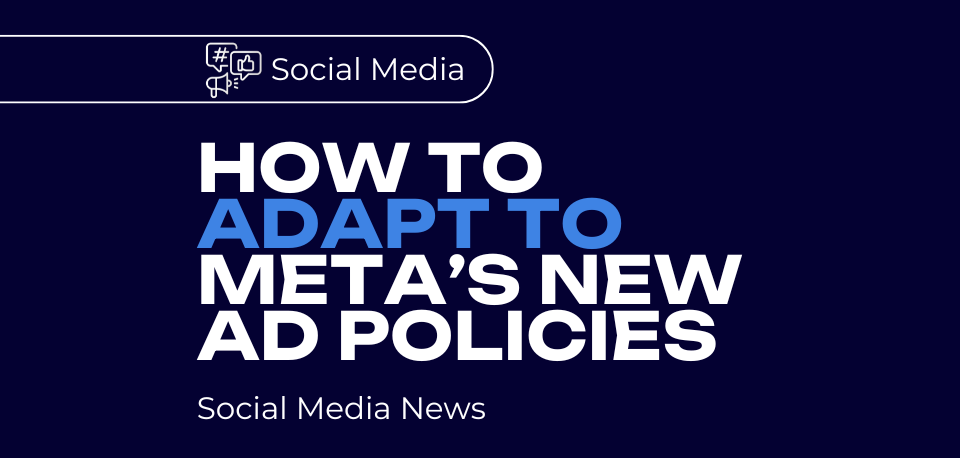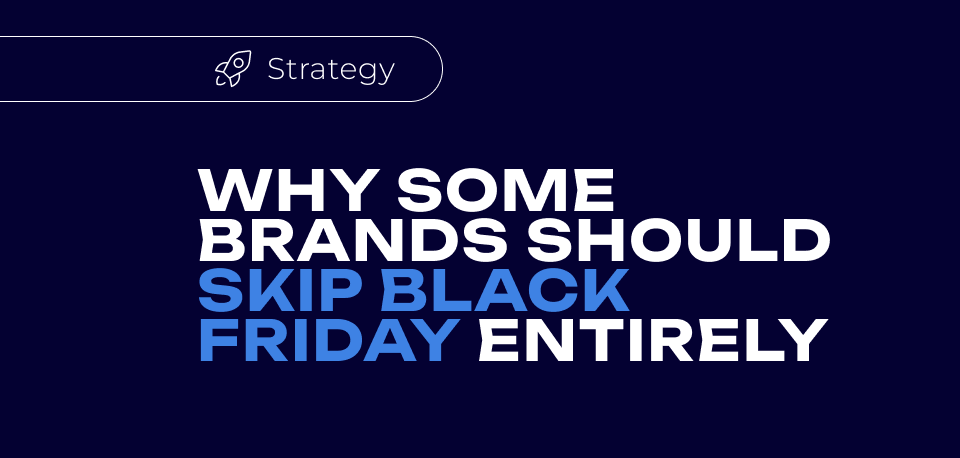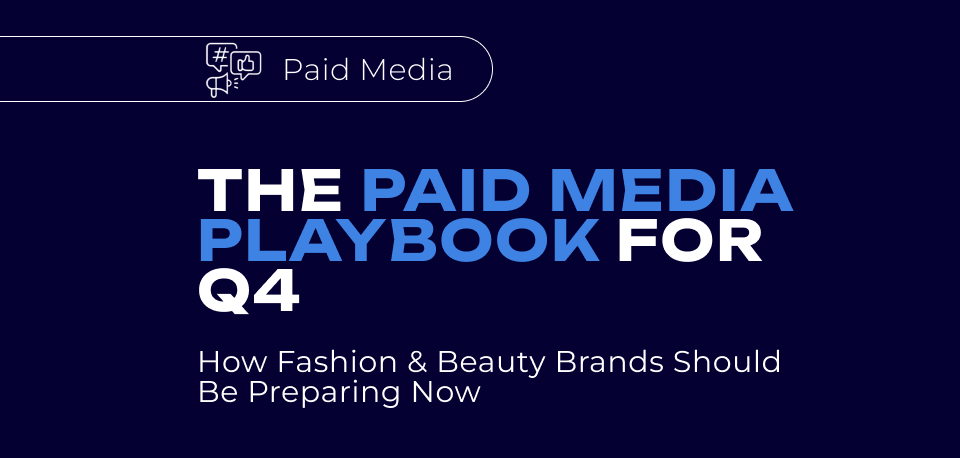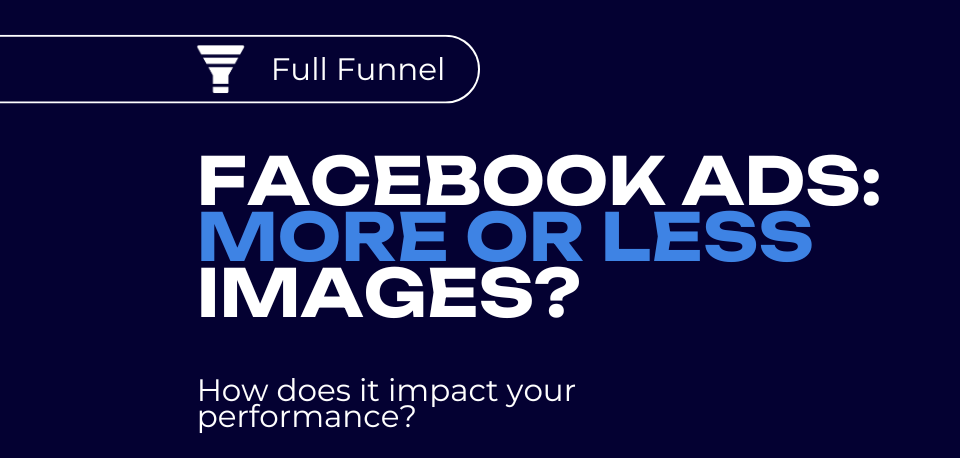The beginning of a new year is almost always a lucrative time for health and wellness advertising, as consumers embrace the “New Year, New Me” mantra.
Unfortunately, it’s also a time when platform leaders, like Meta, can step in and shake up the game – forcing you to rethink your entire paid advertising strategy.
This year (in 2025), Meta’s new advertising policies are going to make earning and converting leads much tougher for health and wellness companies. Now, you don’t just have countless industry rules and regulations to worry about when you’re creating your ads, you’re going to have a harder time actually running and measuring the results of specific lower funnel ads in your campaigns.
Starting from January 2025, Meta will be restricting health and wellness (as well as other sensitive sector) brands from using key event tracking options like “Purchase” or “Add to Cart” for ads. In other words, the way you track and optimize your full-funnel marketing strategies is going to change.
However, since Meta is the world’s biggest social media company, you can’t afford to simply banish its channels from your advertising strategy. You need a proactive approach to help you improvise, adapt and overcome (Bear Grylls style). Fortunately, we’re here to help.
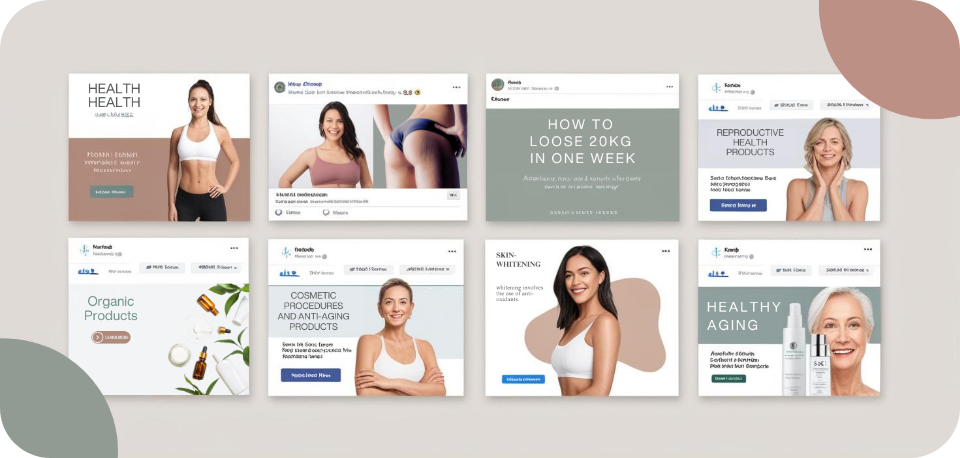
Content
Understanding Meta’s Health and Wellness Advertising Policies
Let’s face it, health and wellness advertising has never been particularly straightforward. Social media advertising policies aren’t the only thing health-focused brands need to navigate. Regulations like HIPAA to be aware of, the ABPI Code of Practice guidelines, and even Google’s “YMYL” (Your Money or Your Life) restrictions make healthcare marketing notoriously difficult.
Meta’s recent health and wellness advertising policy updates aren’t the first time that the company has placed restrictions on health brands either. For years now, Meta has restricted companies from advertising certain products, using specific messages, and making certain claims on channels like Instagram and Meta. For instance, there are rules related to:
- Weight loss and body image ads: Meta prohibits ads that show before-and-after body transformation comparisons (in most cases), or depict close-up images of body parts in a way that reinforces insecurities. You also can’t use messaging that enforces unrealistic beauty standards or implies negative self-perception – which is probably a good thing.
- Cosmetic procedures and anti-aging products: Ads for cosmetic procedures, like dermal fillers and Botox are scrutinized in a similar way to weight loss and body image ads. Advertising certain products is even explicitly banned (such as skin-whitening products that permanently alter a person’s skin color.)
- Sexual and reproductive health products: Ads for sexual and reproductive health products also face restrictions. They need to target audiences 18 and older, and need to emphasize the medical benefits offered, rather than promising things like better sexual experiences.
With the help of a paid social media marketing agency, however, it’s been relatively easy for most companies to navigate these restrictions. The new health and wellness advertising policies, however, introduce a whole new range of challenges for marketing.
Changes to Meta’s Ad Policies: The Facts
So, what exactly is happening right now? Well, back in mid-November 2024, Meta started advising agencies and advertisers that it was going to be rolling out “new restrictions” for certain categories of websites using Meta business tools – starting from January 2025.
These updates center mainly around privacy and legal concerns in the digital marketing landscape, targeting brands that may inadvertently share sensitive user data through Meta’s business tools. For health and wellness advertisers, this means navigating a new set of restrictions that will challenge traditional performance marketing tactics.
The updated ad policies focus on apps and websites that cover “sensitive topics” – the most prominent being health and wellness. For advertisers and companies across the US, EU, and UK, this translates into restrictions on Meta’s business tools. Certain events will be blocked, meaning mid and lower-funnel events (Add to Cart and Purchase) will be restricted.
There will also be new Conversion API limitations and server-side APIs will be unable to track and share information on restricted events. Information on the extent of the changes is still pretty vague. For instance, we already know that not all health and wellness brands are going to be affected equally, and that some will be exposed to partial restrictions, while others will face full restrictions.
However, we do know that these health and wellness advertising changes are going to have a big impact on how brands collect, handle, and manage sensitive user data.
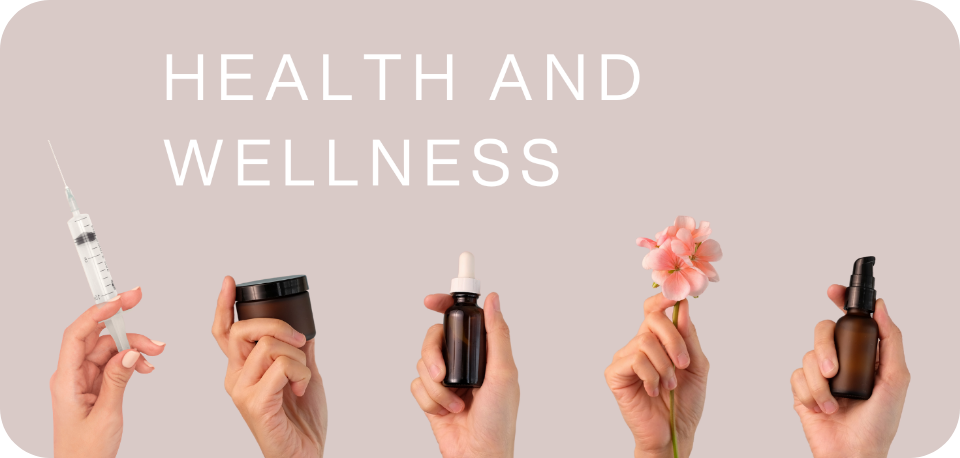
What Does This Mean for Health and Wellness Advertising?
On a broad scale, this update isn’t entirely new. Meta is basically reaffirming and updating the policies its platforms already had for paid advertising, and the kind of data brands in certain categories can share with business tools. However, full-funnel advertising for health and wellness companies is definitely going to evolve – as is the way companies create, manage, and track campaigns.
Things are still being clarified by Meta, but you can expect:
- Less Conversion Data: With restrictions on lower-funnel tracking, brands that rely on performance marketing tactics may struggle to assess campaign ROI. Key metrics like purchases or leads will no longer be available for optimization, forcing a shift toward upper-funnel strategies like brand awareness and engagement.
- Adaptation Challenges: Health and wellness brands often depend on January—peak wellness season—to drive conversions. Losing access to performance data during this critical period could disrupt annual sales projections and marketing plans.
- Greater Focus on Privacy Compliance: Meta’s changes reinforce the importance of data privacy. Brands must now audit their websites and data-sharing practices to ensure they comply with these new standards. Failure to do so could result in complete restrictions.
Which Brands Will Be Affected?
Notably, Meta’s ad policy updates mostly affect health and wellness advertising. But other companies in sensitive categories are going to be affected too. Just some examples of the types of companies that are going to need to update their advertising strategies include:
- Health and Wellness Brands: Companies selling supplements, fitness programs, wellness products, and even nutrition brands are at the forefront of these changes. These businesses often rely on lower-funnel events like “Purchase” or “Add to Cart” to gauge success and fine-tune targeting. Losing access to these metrics will force a significant shift in advertising strategies.
- Pharmaceutical and Medical Services: Telemedicine providers, pharmacies, and even local healthcare clinics could find themselves flagged as sensitive, leading to reduced functionality in Meta’s Business Tools.
- Fitness and Lifestyle Apps: Apps promoting dieting, mental health support, or workout routines might also face restrictions, especially if they collect or share user data related to health behaviors.
- Adjacent Categories: Even businesses not directly tied to health and wellness, like legal firms specializing in personal injury or brands offering lifestyle products, could be swept into these categories due to the broad scope of Meta’s definitions.
One quick point to keep in mind here is that Meta’s automated system for categorizing businesses is far from foolproof. Companies loosely connected to health and wellness, like certain nutrition brands or fitness apparel retailers, could be flagged unnecessarily.
That’s why it’s going to be incredibly important to make sure you’re monitoring your account status on Meta’s Events Manager system regularly. Although Meta won’t pause your active campaigns based on these restrictions – you should receive a notification giving you time to shift lanes.
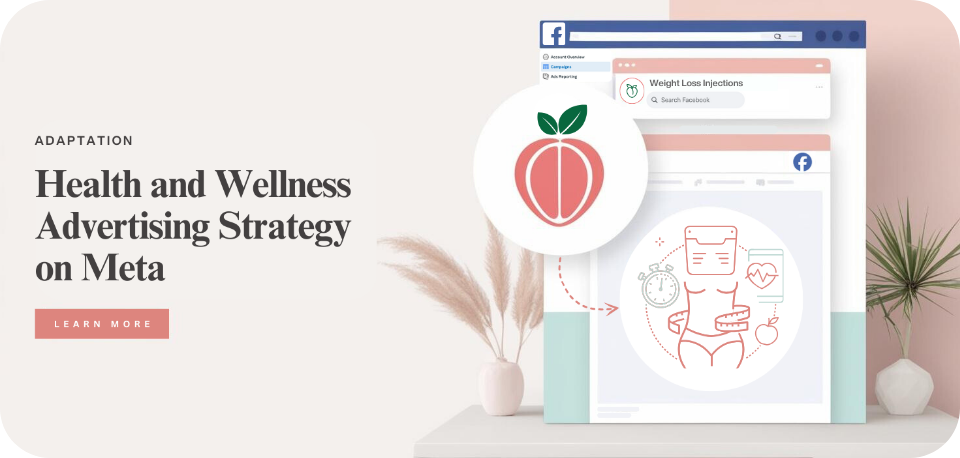
How to Prepare your Health and Wellness Advertising Strategy
So, what is a health and wellness company to do? Should you just give up on Meta advertising for your bottom of funnel campaigns entirely? Of course not. Not yet – anyway. Here are some practical, actionable steps you can take to prepare for the change.
1. Check Your Classification
Before you start panicking and rethinking your Paid-Social Strategy check whether Meta’s new health and wellness advertising policies are going to impact your business. Log in to your Events Manager and look for any notifications about your classification.
You’re likely to see a notification if you’re running ads for a health and wellness brands associated with medical products, nutritional items, patient care, and so on. Most supplement brands probably won’t be affected, unless they’re offering products linked to specific diseases or ailments.
Remember, other sensitive category brands, like financial services groups might be impacted too, so it’s a good idea to keep checking for alerts. If you’re flagged as a “sensitive” company, and you don’t think that you’ve been categorized correctly, file an appeal immediately. Meta’s review process typically takes 3-7 days, so it’s important to act fast.
Even if you’re a health and wellness-adjacent brand, keep a close eye on your account. Meta’s definitions are broad, and misclassification can happen. Stay vigilant and prepared to challenge errors.
2. Update your Health and Wellness Advertising Copy
Next, rethink your advertising messages. The best paid social agencies should already be advising you to steer clear of language that could be flagged as misleading, or exaggerated. Still, it’s best to be particularly cautious right now. Avoid publishing any ads that imply you can cure or treat direct medical conditions where possible.
For instance, as a nutrition brand, you shouldn’t be telling customers that your new energy drinkfights against diabetes, or helps with obesity. Promote general wellness benefits instead. For instance:
- Replace “Treats ADHD” with “Improves focus.”
- Swap “Cures Rosacea” for “reduces redness.”
- Use “boosts overall wellbeing” instead of “beat obesity.”
Be cautious with Meta’s suggested ad copy too. Meta’s automated tools lack context and can inadvertently include language that violates health and wellness advertising policies. Always review and adjust suggested copy to ensure it aligns with your brand’s tone and complies with Meta’s rules.
Refine your product messaging while you’re updating your ads. Reorganize categories to emphasize benefits over medical implications. For example: “Daily comfort essentials” instead of “pain relief”.
3. Adjust your Health and Wellness Advertising Campaign Strategies
If you’re affected by Meta’s new policies, you won’t be able to rely on lower-funnel events like “Purchase” or “Add to Cart” for campaign optimization. To adapt, you’ll need to focus on non-restricted events that can still drive meaningful engagement and results.
Focus on driving results for other aspects of your full funnel marketing strategy. For instance, embrace non-restricted events like:
- Landing Page Views: Optimize campaigns to bring users to your website. This can help boost brand awareness, and provide a foundation for retargeting efforts.
- View Content: While traditionally used to track intent (e.g., users viewing product pages), this event remains allowed for awareness and consideration campaigns. It’s a valuable tool for gauging initial interest for health and wellness products.
Remember to check your campaigns for custom events that mirror restricted events (like custom purchase tracking) to avoid policy violations, too.
4. Look for New Ways to Collect Valuable Data
The way you collect data at the bottom of the funnel (to guide your marketing budget and strategy) is going to change with these new health and wellness advertising policies. First-party data and third-party tools can help fill the gap, enabling continued optimization and insight into bottom-of-funnel (BOF) performance. Start with first-party data collection strategies.
By implementing neutral custom event names, you can continue tracking and optimizing lower-funnel conversion events outside Meta’s restrictions. For example:
- Replace the standard “Purchase” event with a custom event like “YourBrand_Purchase.”
- Use “YourBrand_CKO” instead of “Initiate Checkout.”
- Aimerce server side solution can already do this for you.
Another option is to explore different ways to collect data about your audience, like creating quizzes for companies searching for products, or sending out surveys. These tools can provide information about customer intent without exposing you to too much sensitive information.
Third-party tools can help too. Platforms like Triple Whale and Northbeam can track purchases and other lower-funnel events independently of Meta’s ecosystem. These tools provide actionable insights into conversions, helping you optimize campaigns even as Meta enforces stricter tracking rules.
5. Consider an Omnichannel Marketing Approach
Meta platforms are incredibly valuable for health and wellness advertising, but you don’t have to limit yourself to Meta channels alone. Now could be the perfect time to broaden your horizons and take an omnichannel approach with your full funnel advertising.
Consider investing in paid search advertising campaigns (like Google Ads). With Google’s robust analytics, you can optimize campaigns even as tracking becomes more challenging elsewhere.
Explore other social media advertising channels, like TikTok – for younger, trend-focused customers, Pinterest – for those focused on product discovery (particularly in the nutrition sector), and YouTube, to engage, entertain and educate your audience.
Diversify your approach by tailoring campaigns for different funnel stages. You could use Instagram and Facebook to build awareness, then switch to Pinterest and YouTube for consideration, before moving to Google for conversion-focused audiences.
6. Be Proactive and Experimental
Meta’s new policies are just the beginning of what’s likely to be an increasingly regulated advertising landscape. Being proactive now can save your health and wellness advertising strategy from bigger disruptions later. Here’s how to stay ahead:
- Monitor policy enforcement: As Meta tightens its grip on sensitive categories, it’s critical to keep a close watch on your ad account. Check for notifications in Ads Manager and Events Manager to ensure your campaigns comply with the latest rules. Expect periodic updates and technical adjustments, and be prepared to pivot quickly when changes arise.
- Prepare for shrinking custom audiences: Meta’s policies could limit your ability to grow custom audiences. Without the addition of new user data, these audiences may shrink over time. Start exploring alternative targeting methods, such as lookalike audiences or interest-based targeting, to maintain campaign effectiveness.
- Collaborate with experts: Navigating a highly regulated environment requires expertise. Consider partnering with agencies like The Graygency, specializing in full-funnel marketing strategies to optimize your campaigns. Experts can help you adjust your messaging, leverage non-restricted events, and build compliant workflows to future-proof your advertising efforts.
- Develop sub domains: So far the only realistic solution is to create a range of sub domains to run traffic to, cloning your existing domain. This measure is only temporary but we have been reliably informed it is a workaround.

Managing the Health and Wellness Advertising Shake-Up
Ultimately, Meta isn’t just shaking up health and wellness advertising for the fun of it. Increasing legal scrutiny over privacy compliance and advertising transparency is causing a significant shift in the digital advertising landscape. Meta either needs to adapt – or risk serious fines.
Already, Meta has faced plenty of backlash for it’s lax approach to data privacy, and the fact that many companies use misleading or exaggerated claims in ads. It simply can’t afford to take a “business as usual” approach anymore. These new policies are basically Meta’s safeguard – helping it to ensure brands can promote products responsibly, and allowing it to protect more data.
While these changes will create challenges for advertisers, they also present an opportunity to innovate. Though the immediate adjustments may feel restrictive, this evolution is a chance for companies to align with future-forward, ethical advertising practices—and ultimately thrive in the process. All you really need is the right support.
At The Graygency, we specialize in navigating Meta’s complex ad ecosystem, crafting tailored campaigns that drive results at every stage of the funnel. With deep experience in paid social strategies and a proven track record in health and wellness advertising, The Graygency can help your brand stay ahead of these changes and maximize your campaign performance.
Don’t take the risk of sitting back and waiting to see what happens. Reach out to The Graygency today and future-proof your health and wellness advertising strategy.

